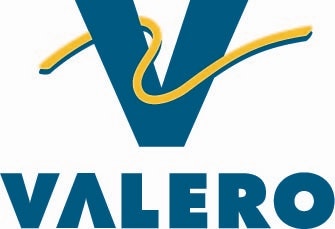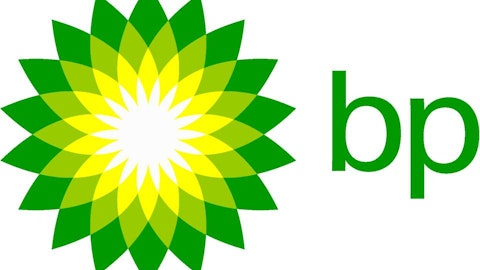Big oil companies tend to be the go-to stock for most investors seeking to capitalize on rising oil prices. However, to find the biggest profits as an oil investor, you have to drill down past the obvious investments and look to invest in support services and refineries. One such power play is Valero Energy (NYSE:VLO).
Recently there has been a lot of insider activity over at Valero and many wonder how they should play the news. The smart money says it is time to go long on Valero.

Valero’s 10 ethanol plants have a combined production capacity of 1.2 billion US gallons (4,500,000 m3) per year, and Valero is even branching out into alternative energy with a 50 megawatt wind farm.
On Oct. 1, 2011, it acquired the Meraux Refinery and related logistics assets from Murphy Oil. On Aug. 1, 2011, it acquired 100% interest of Chevron Corporation (NYSE:CVX) Limited from a subsidiary of Chevron Corporation (NYSE:CVX).
Chevron has experienced positive news recently, announcing its first new discovery off the Western Australian coast since 2009 by its Australian subsidiary. This announcement follows other drilling success in the Exmouth Plateau area, which is located in the Carnarvon Basin.
According to George Kirkland, Chevron’s vice chairman, “The Asia Pacific region is key to Chevron’s growth strategy and our strong Australia natural gas portfolio continues to be bolstered by our strategic approach to finding and developing resources that will help meet the growing energy needs in the region.”
The Truth About Big Oil
Big returns did not happen in Big Oil, they happened where Big Oil is spending its money; on oil-field service companies and petroleum refineries. The largest, the “Big Boys of Oil,” are Exxon Mobil Corporation (NYSE:XOM), Chevron, BP plc (ADR) (NYSE:BP), and Occidental Petroleum Corporation (OXY).
These companies spend billions, if not trillions, exploring the world and drawing the oil from the Earth. They tend to be the go-to stocks for many investors looking for a way to benefit as oil prices rise; and, granted, to a degree that makes sense. Exxon alone has more than 84 billion oil-equivalent barrels in reserve, so oil price increases mean that the oil Exxon produces generates massive leverage in its earnings. However, the reality is that Big Oil stocks are not as correlated to oil price movements as many investors assume.
Using a scale from 0.0 to 1.0 (as a scale of percentage), the correlation over the last decade between Exxon’s share price and oil prices is about .83. Exxon’s shares generally move about 0.83% for every 1% move in oil prices. Moreover, Big Oil tends to be much more stable than the price of oil when you consider the massive amount of movement that oil has on the futures market. As a result, Big Oil share prices rarely spike when oil prices do.
Exxon’s share price has been nearly as stable as oil prices over the last decade.
If we were to take the other Big Oil companies and graph their stock prices to oil prices we would see the same thing that we see with Exxon — a relatively stable stock price as compared to oil price.
However, what investors should be looking at is that this year, Exxon and all the other oil exploration and production companies combined will spend over $650 billion looking for and producing new oil reserves. That is an increase of over $400 billion from 2005 spending; based on the current growth trajectory, spending will exceed $1 trillion by 2016. That level of spending, in a single year, exceeds the gross national product of all but the 15 largest countries in the world.
Big Oil is spending a large portion of their revenues on procuring new, viable, sources of oil and so we ask ourselves, where does the money go? The majority of the money is being spent on support services. As a result, to find the biggest profits as an “oil” investor, you have to drill down past the obvious investments in Big Oil and that is where Valero comes in to play.
Recent Developments
On Jan. 30, William R. Klesse, the current CEO of Valero Energy sold about 68,000 shares of Valero’s stock at a price of $42.90 for an approximate value of $2.92 million. Furthermore, according to Valero’s 8K filings, over $18.65 million of shares have been sold by company insiders during last three months alone. That begs the question, what is going on at Valero?
After some careful digging into the 10K filing, it turns out that this was simply Valero’s officers executing stock incentive plans that would have otherwise expired; it does not signal any problems, in fact, it is quite the opposite.
At the time of this writing, Valero shares ended higher by 0.11% to $44.90 and made a new 52-week high of $45.53 on over 11.54 million shares, compared to its average volume of just 9.55 million shares. I believe it has to do in large part with two critical factors that did not make mainstream news and that makes Valero a strong buy for the smart money:
Valero Terminaling and Distribution, a subsidiary of Valero Energy, and TGS Development LP have formed a 50-50 joint venture. This joint venture to build a new marine terminal on the lower Sabine-Neches Waterway near Port Arthur, Texas, is scheduled to be complete in the fourth quarter of 2013.
This new marine terminal can and will receive crude tankers, up to and including the Suezmax class. The crude dock will deliver crude oil through a new 36-inch pipeline to Valero’s Port Arthur Refinery and will have the flexibility to connect to other local refineries as well. Most important to investors is that it will be able to operate without the daylight restrictions imposed on other terminals in the upper Sabine-Neches waterway. This means more throughput with 24 hour operations and so ultimately, more revenue.
Second, Valero has been awarded multiple multimillion-dollar contracts by the U.S. Defense Energy Support Center (DESC) to provide fuel to Israel. How much is this contract worth? It is unknown at this time, but from 2004 to 2009, Israel was supplied with over 500 million gallons of refined oil products, which at the time was estimated to be worth almost $1.1 billion.
The Bottom Line
Valero is poised for record profits. Currently, Valero stock price is in a small retraction from its three-year high of about $46. If you consider that Valero was trading at almost $80 per share as near as five years ago, its market cap of $25.2 billion, and a nice dividend yield of about 1.75%, is it no wonder that the smart money is long on Valero.
The article A Long-Term Power Play in Energy originally appeared on Fool.com and is written by Jordo Bivona.
Copyright © 1995 – 2013 The Motley Fool, LLC. All rights reserved. The Motley Fool has a disclosure policy.





